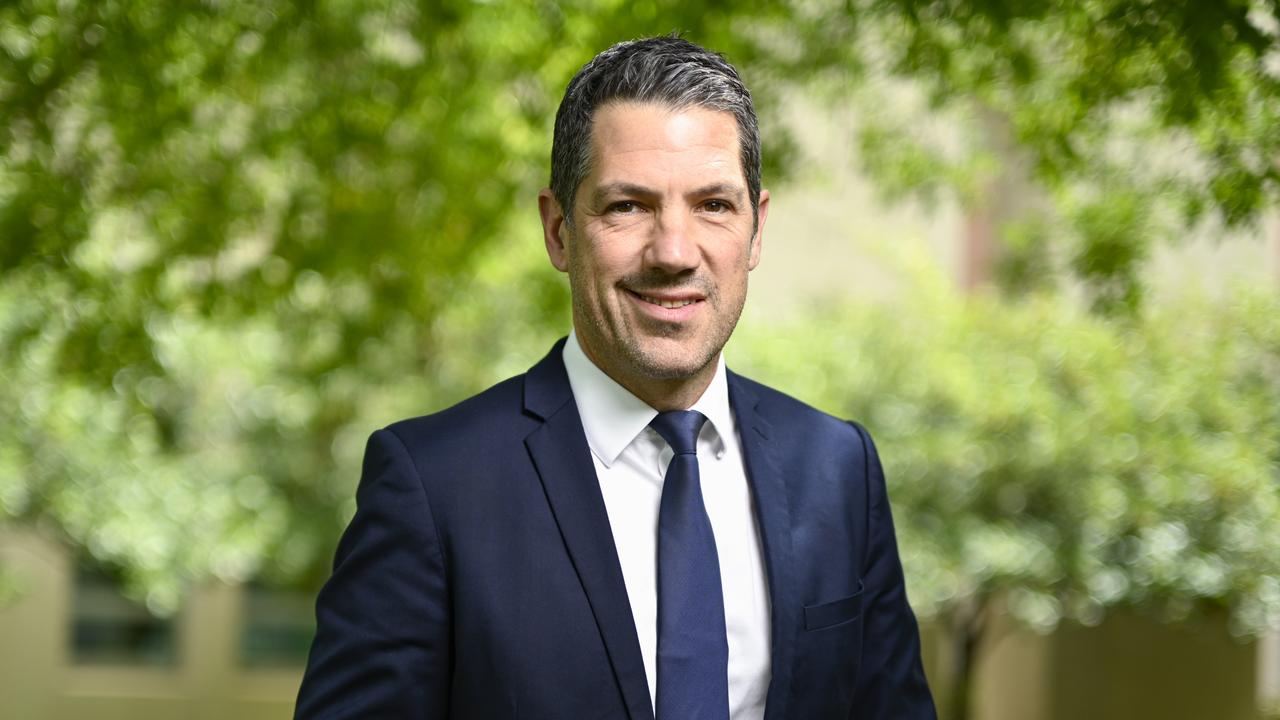Only nursing homes residents and prisoners left living in institutions
Nursing home residents and prisoners are the last groups in Australia living in institutional settings, aged-care advocates warn.

Residents of large old-style nursing homes sit alongside prisoners as the only groups in Australia still living in institutional settings, a leading aged-care advocate warns.
And another key voice for older Australians says the Albanese government must explore models of aged care that move away from the “anachronistic” 100-bed plus nursing homes homogenising the lives of older people.
Aged and Disability Advocacy Australia chief executive Geoff Rowe is calling on the government to allocate 10 per cent of its aged-care reform spending to explore ways to deinstitutionalise care to give those in their twilight years a better chance to age well.
“Worryingly, older Australians and prisoners are the only remaining cohorts supported in institutional settings,” Mr Rowe said.
“The disability and mental health sectors saw the benefits for people moving to community-based living and support decades ago, so why is residential aged care one of the last bastions of the institution?”
He said the large older-style multi-bed centres, which for many older people there was no alternative, “tend to foster … a loss of autonomy, freedom and purpose, as well as feeling isolated, and in worst-case scenarios, abuse and neglect”.
While providers and care staff were doing their best to provide good care to residents, inherent flaws in institutional living such as “the need for routine, rules and a ‘one-size-fits-all’ approach which can easily be applied to supporting large numbers of people” saw it failing as a model for ageing well, he said.
With the number of Australians aged 85 and over projected to rise from 534,000 in 2021 to 1.28 million by 2041, Mr Rowe said the government should substantially bolster support for in-home care and invest in a more diverse suite of housing options that allow older people to more comfortably live out their final years in their own communities.

“We know older Australians want to remain in their own homes as long as possible. An effective and nimble home-care program will support the preference to age in place and is a much more cost-effective model of care compared to residential care,” he said.
Older Persons Advocacy Network chief executive Craig Gear agreed that older people were crying out for more diverse types of accommodation so they “can live where they want in the way they want”.
“It’s time to acknowledge the anachronistic nature of large-scale institutions,” Mr Gear said.

“We need a funding model that enables older people to enjoy quality care while maintaining their autonomy and connection to the community.”
Mr Gear said providers and the government must look at innovative ideas to drive the best care for the available funding.
“These include mobile and manufactured homes, rental retirement villages, small communal and home-share arrangements,” he said.
“We know there are providers out there offering care community and campus-like environments within larger homes that design out the issue of institutionalisation. This can even be achieved through retrofits.”
Aged Care Minister Anika Wells said she was “intent on fostering innovation in the sector so it is more agile and needs-based”, and would say more on the issue after next month’s federal budget.
“Aged care needs more innovation and unique thinking to ensure older Australians have care suited to their circumstances,” Ms Wells said.

“I have met with innovative leaders in the sector in New Zealand and Canada to understand more about small village and greenhouse models that prioritise needs-based care. We need more options for older Australians to age independently, but to still have access to essential clinical care when they need it.”
Beyond its long-term future, residential aged care is facing an immediate financial crisis, with government figures showing 66 per cent of private non-profit and for-profit providers operating at a loss, with average losses at $28 per bed per day.
Wesley Mission announced last week it was shutting its three Sydney aged-care homes, citing the financial difficulties of being a small provider and attracting the workforce needed to meet new government requirements. About 200 residents will be relocated.
Aged care is one of the federal government’s largest spending programs, with $27bn budgeted for in-home and residential care this financial year, rising to almost $35bn by 2025-26.
Treasurer Jim Chalmers has acknowledged it is one of the budget’s key pressure points, with more nursing hours required at each centre and most care workers set to receive a 15 per cent pay increase from July 1.

Mr Rowe said one of the critical immediate failures in the current system was the transition between hospital and in-home care, which forced too many prematurely into residential aged care because there was no other choice.
“In-home support should be available when you need it and have the flexibility to easily scale up and down as needed,” he said.
A reformed in-home care program is due to take effect from July next year, and the sector is looking forward to seeing the details from the government.
“We would like to see the new home-care program cater for older people who want to share supports in shared housing,” Mr Rowe said.
“The aged-care royal commission made specific reference to the co-housing model, where multiple people live in one dwelling and share living spaces.”
He said existing larger homes could make a range of relatively simple changes to deinstitutionalise them. “There are examples of positive impacts which have been achieved with good interior design and refurbishment to make the most of space, light, colour, indoor and outdoor spaces,” he said.
“Similarly, other things that make a facility feel more like home, such as being able to make your own cup of tea or coffee, sit in a reading room, or keep to your own schedule for personal care and meals, would help with creating a greater sense of autonomy, choice and dignity for residents. Currently, there is little dignity of risk afforded to residents. Giving choice and control comes with more inherent risk which has to be accepted as part of being human.”








To join the conversation, please log in. Don't have an account? Register
Join the conversation, you are commenting as Logout